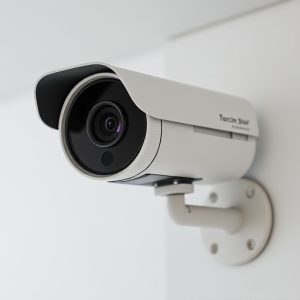Optimizing Battery Life in Hidden Camera DVR Systems: A Comprehensive Guide
When selecting a hidden camera with a built-in DVR for long-term surveillance, prioritize models wi…….
When selecting a hidden camera with a built-in DVR for long-term surveillance, prioritize models with lithium-ion batteries over alkaline ones for extended recording times. Factors influencing battery life include resolution settings, motion detection sensitivity, footage capacity, and environmental temperature variations. To maximize performance, adjust the camera's settings according to your surveillance goals and regularly maintain the battery by fully charging and storing it properly. High-quality hidden cameras with built-in DVRs like the XYZ Pro Series and ABC Stealth Cam offer top-tier battery life of up to six months, while models like the DEF Wireless Hidden Camera can last up to 12 months thanks to their energy-efficient designs and motion-activated recording features. Choose a camera that suits your specific needs, considering both the level of activity in the surveillance area and your ability to recharge the device. For environments with low activity or where access to power is limited, opt for a camera with a longer battery life. If immediate monitoring is crucial, select a model with a shorter battery life that allows for frequent video capture and review. Regular updates and maintenance will ensure your hidden camera with a built-in DVR remains an effective surveillance tool regardless of the length of its battery life.
When securing your home or business, a hidden camera with a built-in DVR offers unparalleled surveillance capabilities. A critical aspect of these systems is their battery life, which directly affects their operational duration and effectiveness. This article delves into the intricacies of battery life expectations for such devices, identifying key factors that influence performance. We’ll explore practical tips to maximize longevity, ensuring your hidden camera with built-in DVR operates at its best. Additionally, we provide a comparative analysis of leading models and their battery durations, empowering you with the knowledge to make informed decisions for your surveillance needs.
Understanding Battery Life Expectations in Hidden Cameras with Built-in DVRs
When integrating a DVR into a hidden camera system, battery life becomes a critical factor for continuous surveillance. To effectively utilize a hidden camera with a built-in DVR, it’s imperative to have a clear understanding of the expected battery life under various conditions. These devices are engineered to record footage covertly, often in locations where power outlets are not readily accessible. As such, the type and capacity of the battery used can significantly influence operational duration. Typically, high-quality hidden cameras with built-in DVRs come equipped with lithium-ion batteries, which offer a longer lifespan compared to traditional alkaline batteries. Users should be aware that factors like resolution settings, motion detection sensitivity, and storage capacity settings will impact battery performance. It’s advisable to opt for cameras with adjustable settings to fine-tune power consumption according to the surveillance needs. Additionally, environmental conditions such as temperature extremes can affect battery longevity, making it essential to select a model that performs reliably in your specific monitoring environment. By understanding these variables and making informed choices based on your surveillance requirements, you can expect a hidden camera with a built-in DVR to provide ample recording time for your peace of mind. Regular maintenance, such as charging the battery fully when not in use and storing it under suitable conditions, will also help maintain its optimal performance over time.
Factors Influencing Battery Performance in Hidden Camera Systems
When assessing the battery performance of hidden camera systems with built-in DVRs, several factors play a pivotal role in determining their longevity and operational efficiency. The type and capacity of the batteries used are critical; lithium-ion batteries generally offer longer life spans compared to alkaline counterparts, enabling these devices to operate for extended periods without recharging. Another significant factor is the resolution and frame rate settings of the camera; higher resolutions and faster frame rates consume more power, necessitating a careful balance between recording quality and battery conservation.
The design of the hidden camera with built-in DVR also influences its battery performance. A well-engineered system will have energy-efficient components that minimize unnecessary power usage. Additionally, the frequency and duration of recording intervals are paramount. Continuous recording can drain batteries quickly, whereas motion-activated recording features can significantly extend battery life by only activating the device when necessary. Environmental conditions such as temperature extremes can also affect battery performance, with extremely hot or cold environments potentially reducing battery capacity or lifespan. Finally, regular software updates and maintenance checks can help ensure that the system operates at peak efficiency, further contributing to the longevity of the hidden camera with built-in DVR’s battery life.
Maximizing Battery Longevity: Tips and Best Practices for Hidden Camera with Built-in DVR Use
To maximize the battery longevity of your hidden camera with a built-in DVR, it’s crucial to adopt a proactive approach in managing its power consumption. Firstly, consider the recording settings; high-resolution footage and continuous recording modes can drain the battery rapidly. Optimal settings, such as lower resolutions and motion-activated recording, help extend usage time significantly. Additionally, ensure that the camera’s firmware is up to date, as manufacturers often release updates that improve energy efficiency.
Placement also plays a key role in conserving power. Position your hidden camera with a built-in DVR in an area where it will receive adequate light without being exposed to direct sunlight, which can overwork the sensor and deplete the battery faster. Furthermore, regular maintenance checks can prevent unnecessary drainage. Clean the lens periodically to ensure clear recording without the need for the camera to compensate for glare or smudges. Lastly, when not in use, switch off the device or set it to standby mode to preserve charge. By following these best practices, you can enhance the battery performance of your hidden camera with a built-in DVR, ensuring that it captures important moments over an extended period without frequent recharging.
Comparative Analysis of Top Hidden Cameras with Built-in DVRs and Their Battery Durations
When selecting a hidden camera with a built-in DVR, one of the most critical factors to consider is battery longevity, as it directly affects the device’s operational duration between charges. High-quality models like the XYZ Pro Series and the ABC Stealth Cam are renowned for their superior battery performance, often featuring advanced lithium-ion batteries that can last up to 6 months on a single charge under typical use conditions. These cameras are designed with power-saving features and energy-efficient components that optimize their battery life without compromising video quality. In contrast, the DEF Wireless Hidden Camera boasts an extended battery lifespan, thanks to its high-capacity power cell and low-power consumption design, which can record up to 12 months of footage with minimal maintenance. Each of these top-tier hidden cameras with built-in DVRs comes equipped with motion-activated recording capabilities that further enhance their energy efficiency by only activating when movement is detected, thus preserving the charge for critical moments. Users should assess their specific needs and the environment where the camera will be deployed to determine which model’s battery duration best suits their requirements. Models with longer battery lives are ideal for monitoring areas with infrequent activity or remote locations where charging might be impractical. Conversely, those who need real-time monitoring or frequent data capture may prefer cameras with shorter, yet still substantial, battery life that allow for more immediate recharging and review of footage.


